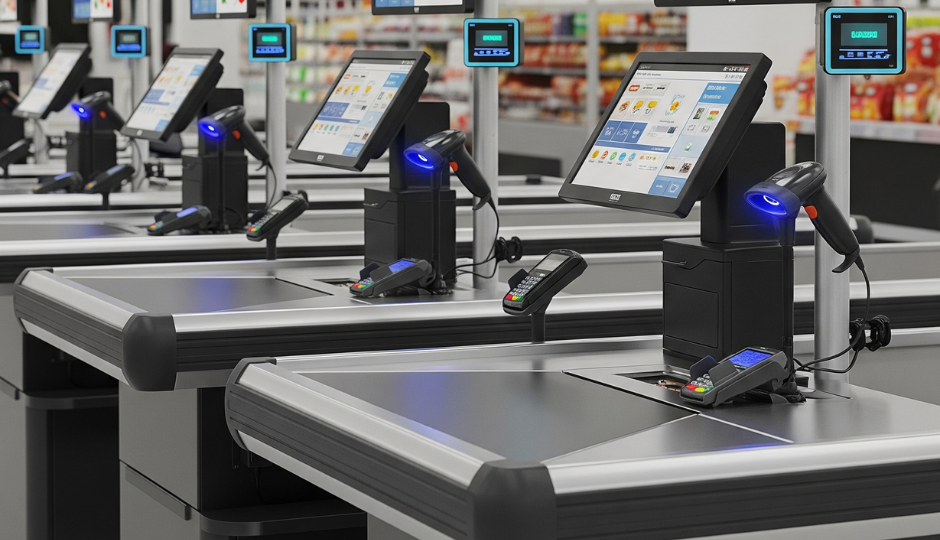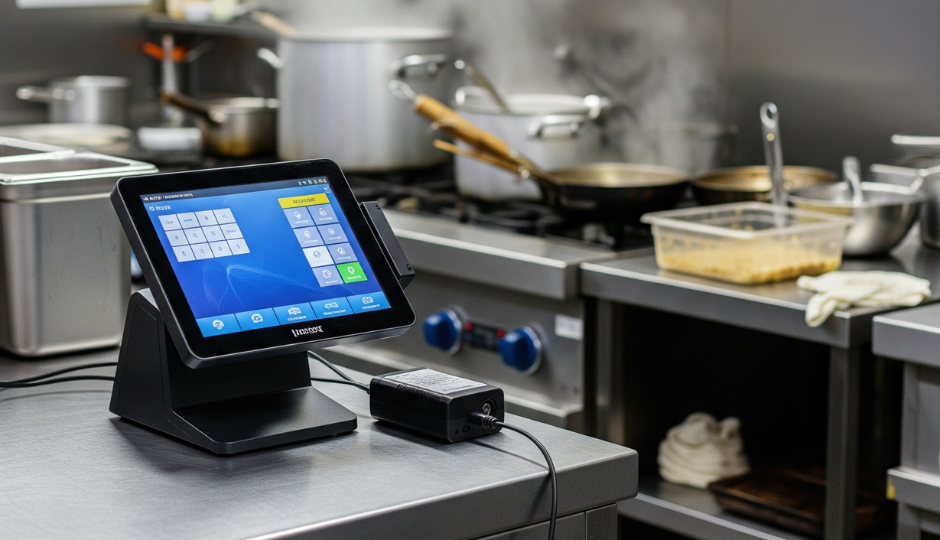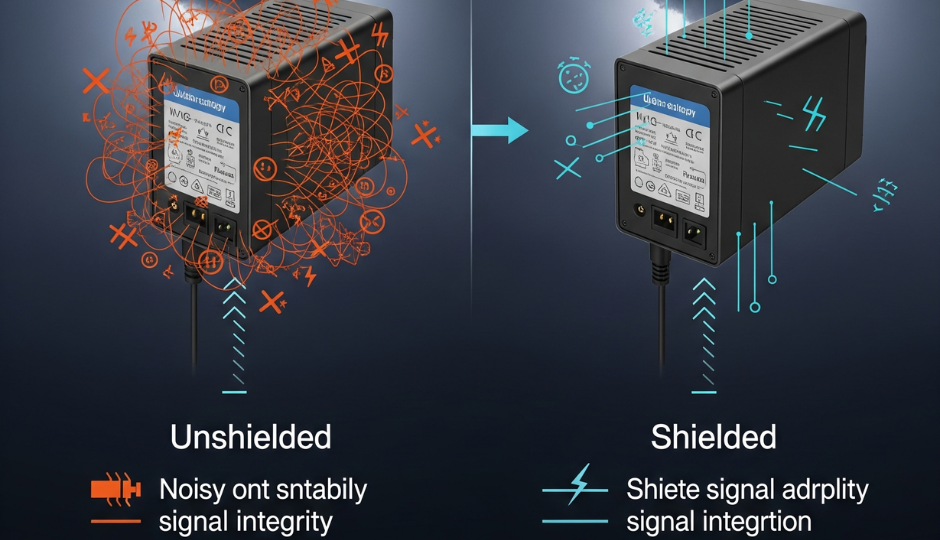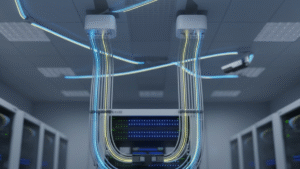POS terminals are everywhere, but did you know their power supply needs vary drastically across industries? From quiet retail shops to steamy restaurant kitchens, this article explores how and why the external power adapter must adapt.
I. Why Do POS Terminals Use External Switching Power Adapters?
POS terminals have evolved from simple cash registers to multifunctional systems that integrate touch displays, receipt printers, card readers, barcode scanners, and wireless communication modules. As the devices become more complex, external switching power adapters (SMPS) have become the go-to power solution.
Key advantages:
- Easy maintenance: Faulty adapters can be swapped without disassembling the device.
- Better heat dissipation: Power components are placed outside, reducing internal heat buildup.
- Wide voltage input: 100–240V AC support ensures global compatibility.
- Flexible output options: Easily match different terminal power requirements.
II. Power Needs of POS Systems in the Retail Industry
1. Supermarkets & Department Stores: Long Operation Hours
In large-scale retail environments, POS systems often run more than 12 hours per day. Peak seasons or promotional events can push that even further. Their adapters must offer:
- High stability under full load: Continuous 12V/5A or higher output.
- Excellent thermal management: Heat sinks or thermal protection circuits.
- MTBF over 50,000 hours: Minimize maintenance and replacement costs.
2. Convenience Stores & Pharmacies: Compact Power Design
Space is premium in small stores. Wall-mounted or integrated POS devices are common. These demand ultra-compact external adapters with:
- High power density (W/cm³)
- Right-angle DC cable outputs for cabinet routing
- Low standby power (<0.1W) to meet DoE Level VI / ErP standards
3. Multi-Device Power Integration in Modern Retail
Modern POS setups may include secondary displays, fingerprint scanners, and label printers. Some retailers prefer adapters with multi-output capability:
- 12V main + USB 5V secondary outputs
- Parallel output support for multiple terminals sharing power

III. Restaurant POS Terminals: Tough Environments, Tougher Demands
1. Fast Food & Takeout: Surviving the Harshest Conditions
Restaurant POS systems are exposed to heat, grease, water, and sudden loads. Their power adapters must be built for endurance:
- Ingress protection (IP42 or higher) to resist oil and water vapor
- Sealed housings using silicone potting or waterproof membranes
- Anti-corrosion materials: ABS+PC casing with flame-retardant properties
- Secure DC connections: Locking plugs or reinforced cable boots
2. Kitchen Interference: EMI Risks Are Real
Back-of-house environments often feature high-interference appliances—microwaves, blenders, induction cookers. This leads to power fluctuations or EMI (electromagnetic interference), which can cause freezing or data loss. Restaurant-grade adapters should include:
- Enhanced EMI filtering with choke coils and capacitors
- Shielded PCB layouts
- Compliance with EN55032 / IEC61000-4 standards
3. Safety Compliance Is Critical
Restaurant staff regularly touch POS devices with wet or greasy hands. To ensure safety, adapters must feature:
- Short-circuit, overvoltage, and overcurrent protection
- Double insulation and Class II design (no ground wire needed)
- UL, CE, FCC, CB certifications

IV. Comparison Table: Retail vs. Restaurant POS Power Needs
| Dimension | Retail POS | Restaurant POS |
|---|---|---|
| Operation Hours | Long continuous use | Intermittent, high-frequency use |
| Environment | Clean, dry, air-conditioned | Humid, oily, steamy |
| Power Demand | Medium-to-high, expandable | Low-to-medium, often single device |
| Safety Standards | Standard UL/CE | Added waterproof, fireproof, EMI proof |
| Form Factor | Wall-mounted OK | Must be compact and concealed |
| Output Design | Multi-output, USB included | Single output, rugged cabling |
V. Future Trends: PoE, Modular, and Intelligent Power
1. Modular Adapters
Some brands now offer customizable adapters with interchangeable plugs, cable lengths, and casings. This improves compatibility and reduces inventory for global deployments.
2. PoE-Powered POS Terminals
Self-ordering kiosks and restaurant displays increasingly adopt Power over Ethernet (PoE):
- No need for power cords
- Centralized power management
- Compliance with IEEE 802.3af/at (15.4W / 30W)
3. Intelligent Power Adapters
High-end POS systems are exploring MCU-integrated smart adapters:
- Real-time monitoring of voltage, current, and temperature
- Remote alerts and power cut-off
- Dynamic voltage negotiation (e.g., USB Power Delivery)

VI. Purchasing Tips for POS Power Adapters
- Assess the actual environment: Is the terminal in a clean checkout counter or a greasy kitchen?
- Calculate true power demand: Include external devices and leave 20–30% power headroom.
- Ensure certifications: UL, CE, PSE, FCC, RCM, etc., depending on your markets.
- Secure reliable supply chains: Crucial for franchise businesses with many terminals.
- Check compatibility: Some POS brands require custom connectors or colors.
Conclusion:
Power adapters may be small in size, but their impact on your POS system’s performance is enormous. Retail and restaurant environments are vastly different, and a one-size-fits-all power solution simply won’t cut it. Whether ensuring uninterrupted transactions in a supermarket or surviving a chaotic kitchen, choosing the right external adapter is the silent key to business efficiency.




